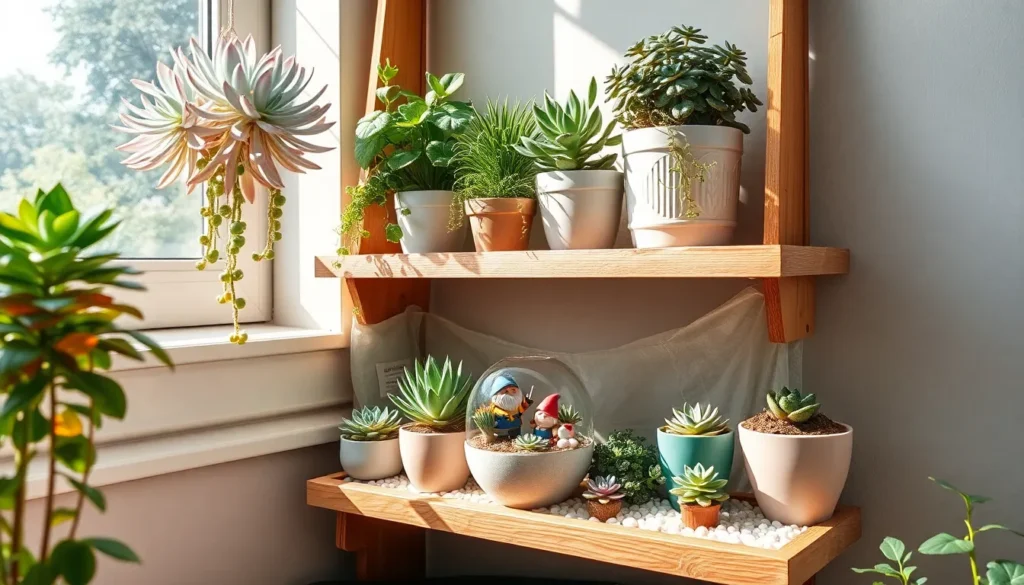In the bustling rhythm of apartment living, finding space for a garden might seem like an elusive dream, but succulents offer a delightful solution. These resilient, water-storing plants have captured the hearts of both beginner and seasoned gardeners, transforming windowsills and tabletops into vibrant, living art.
Succulents thrive where other plants might falter, making them ideal companions in small spaces where light and resources can be limited. Their diverse shapes and colors bring a touch of nature’s artistry into your home, and they ask for little in return, making them perfect for those with busy lifestyles.
In this article, we’ll explore the essentials of succulent care, from selecting the right species for your space to mastering the simple watering techniques that keep these plants happy. You’ll also discover creative ways to arrange succulents in your apartment, ensuring your indoor garden not only survives but thrives. Whether you’re nurturing your first plant or expanding an existing collection, this guide will equip you with the knowledge and confidence to cultivate your own lush, miniature oasis.
Choosing Compact Succulent Varieties
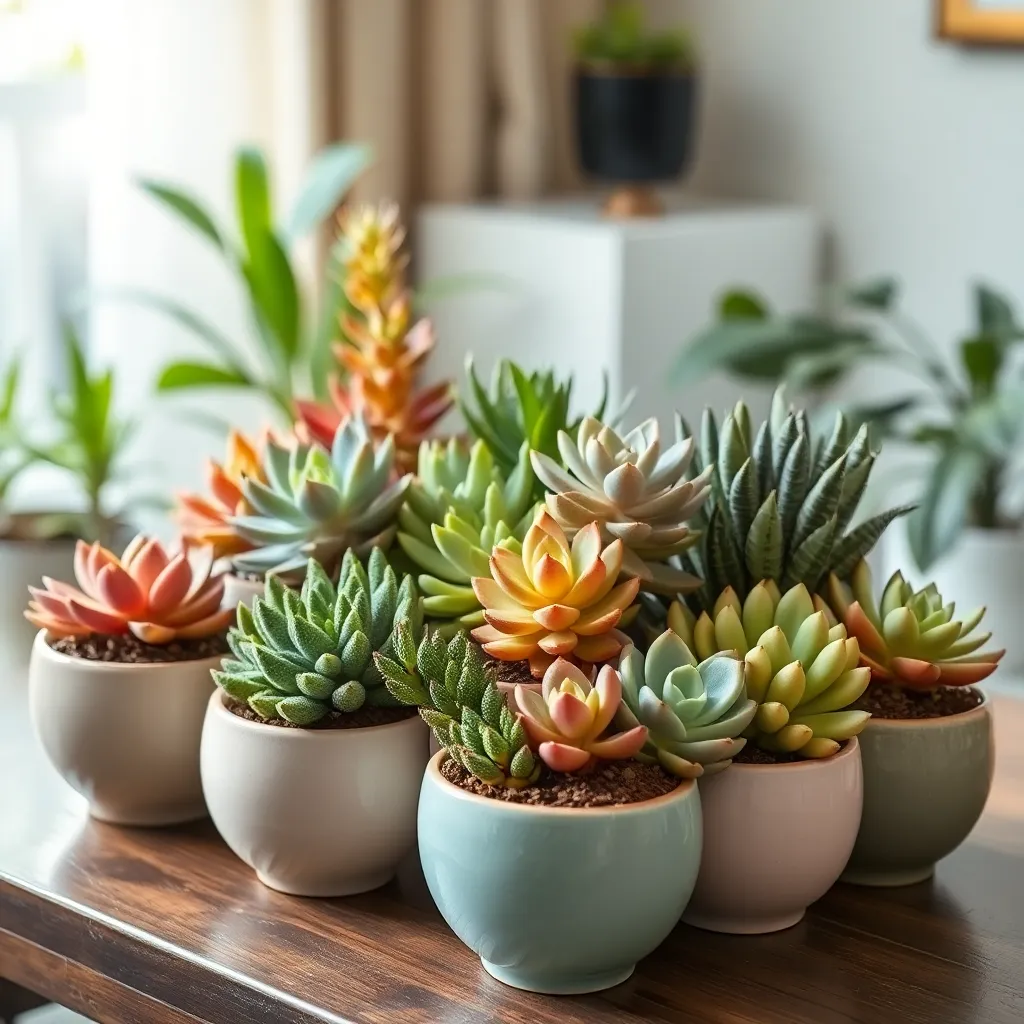
Finding the right compact succulent varieties can transform your small apartment into a lush, green oasis. Start with the popular **Haworthia**, known for its tough, rosette-shaped leaves and minimal water needs.
**Echeveria** varieties are another excellent choice, offering a range of colors and forms that thrive in bright, indirect light. Place them near a south-facing window to ensure they receive the necessary sunlight for vibrant foliage.
For an easy-care option, consider **Crassula perforata**, commonly known as the String of Buttons. This succulent is perfect for beginners, requiring well-draining soil and watering only when the top inch of soil is dry.
Advanced gardeners might enjoy the challenge of propagating these succulents to create a fuller display. Use a mix of cactus soil and perlite to enhance drainage, and remember to sanitize your tools to prevent disease spread during propagation.
Ideal Containers for Space Saving
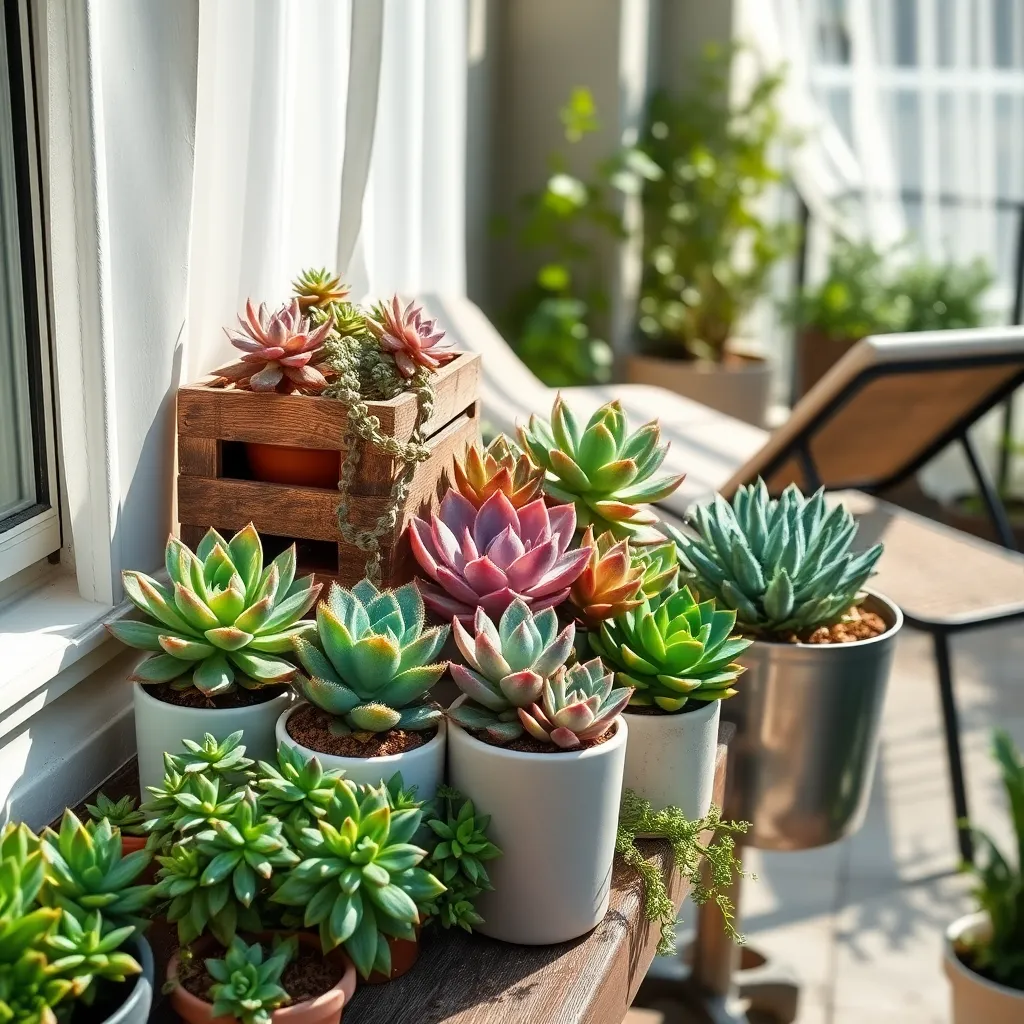
When it comes to saving space in small apartments, choosing the right containers is crucial for successful succulent gardening. Opt for vertical planters or wall-mounted options to maximize your vertical space and keep your succulents thriving without occupying floor space.
Consider using tiered plant stands, which allow you to grow multiple succulents in a compact area. These stands not only enhance the aesthetic appeal of your space but also ensure that each plant receives adequate sunlight from all directions.
Another excellent space-saving option is hanging planters, which can be used to create a floating garden effect. Choose containers made from lightweight materials like plastic or fabric to prevent excessive weight on your walls or ceilings.
For those who prefer a DIY approach, repurposing household items such as mason jars or old teacups can be a creative and budget-friendly solution. Ensure that these containers have proper drainage holes or add a layer of pebbles at the bottom to facilitate excess water drainage.
Light Requirements for Indoor Growth
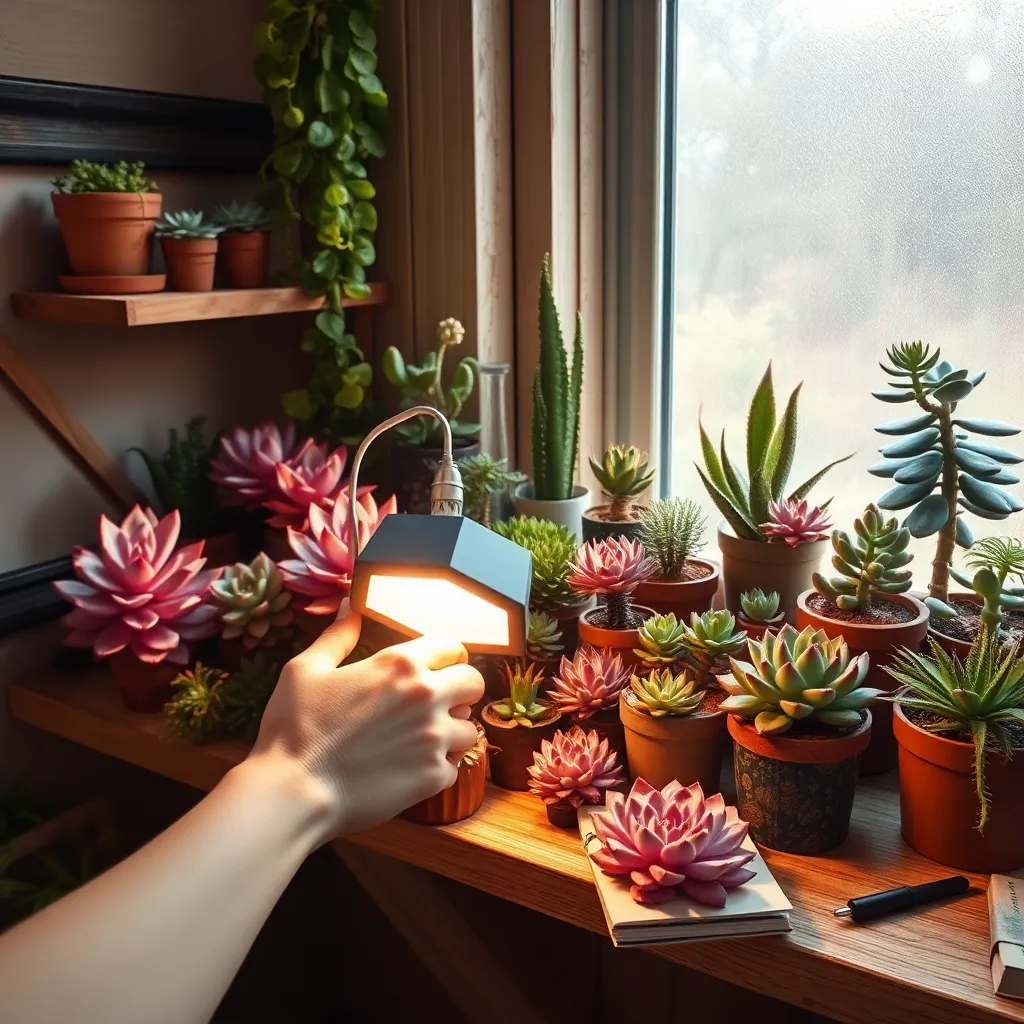
Succulents thrive on light, making it crucial to find the right spot in your small apartment. Position your succulents near a south or east-facing window where they can soak up plenty of natural sunlight throughout the day.
For spaces lacking ample sunlight, consider using grow lights specifically designed for succulents. LED grow lights are an excellent choice, as they provide the specific light spectrum succulents need while being energy efficient and compact.
Beginners should monitor their plants for signs of inadequate light, such as elongated or pale leaves. If you notice these signs, you might need to rotate your plants weekly to ensure even light exposure and adjust the distance from the light source for optimal growth.
Advanced gardeners may experiment with light cycles, simulating natural conditions by adjusting the duration of light exposure. Aim to give your succulents about 12 to 14 hours of light daily to mimic their natural desert environment, which can help them thrive indoors.
Efficient Watering Methods Indoors
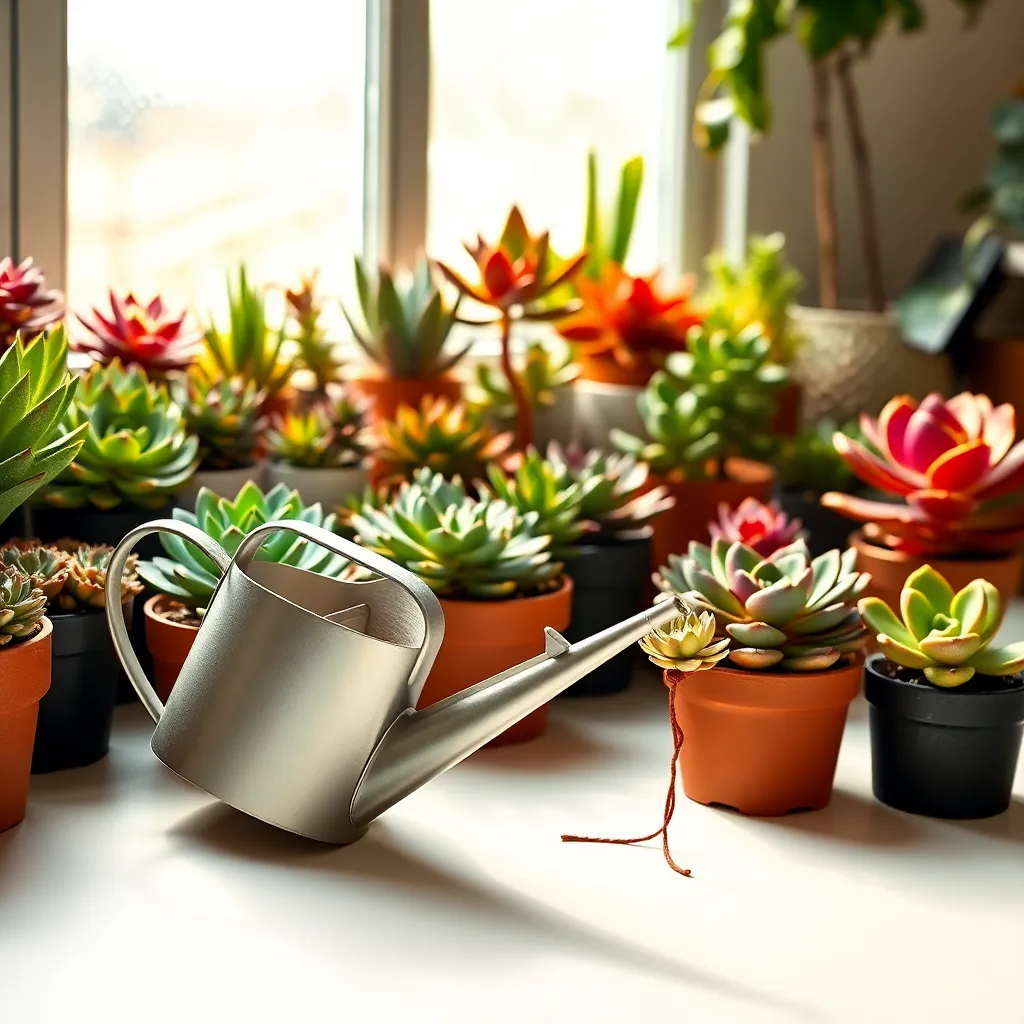
Efficient watering is crucial for keeping succulents healthy in small apartment settings. These plants require a distinct watering routine compared to traditional houseplants, as they are adapted to arid environments.
To ensure your succulents thrive, focus on the “soak and dry” method. This involves watering the plants thoroughly until excess water drains out of the pot, then allowing the soil to fully dry before watering again.
Use a well-draining soil mix, such as one made specifically for cacti and succulents. This type of soil prevents root rot by allowing water to pass quickly through the pot, mimicking the natural conditions succulents prefer.
For beginners, start by watering your succulents every two to three weeks, adjusting based on the indoor humidity and light levels. More advanced gardeners might use a moisture meter to ensure the soil is dry at least an inch below the surface before watering again.
Consider using pots with drainage holes to further enhance your watering efficiency. These pots help prevent water from pooling at the bottom, reducing the risk of overwatering and root rot.
Advanced gardeners can experiment with bottom watering methods, placing pots in a shallow tray of water for 10-15 minutes. This allows the roots to absorb moisture gradually, which can be particularly effective in maintaining plant health.
Creative Display Ideas for Apartments
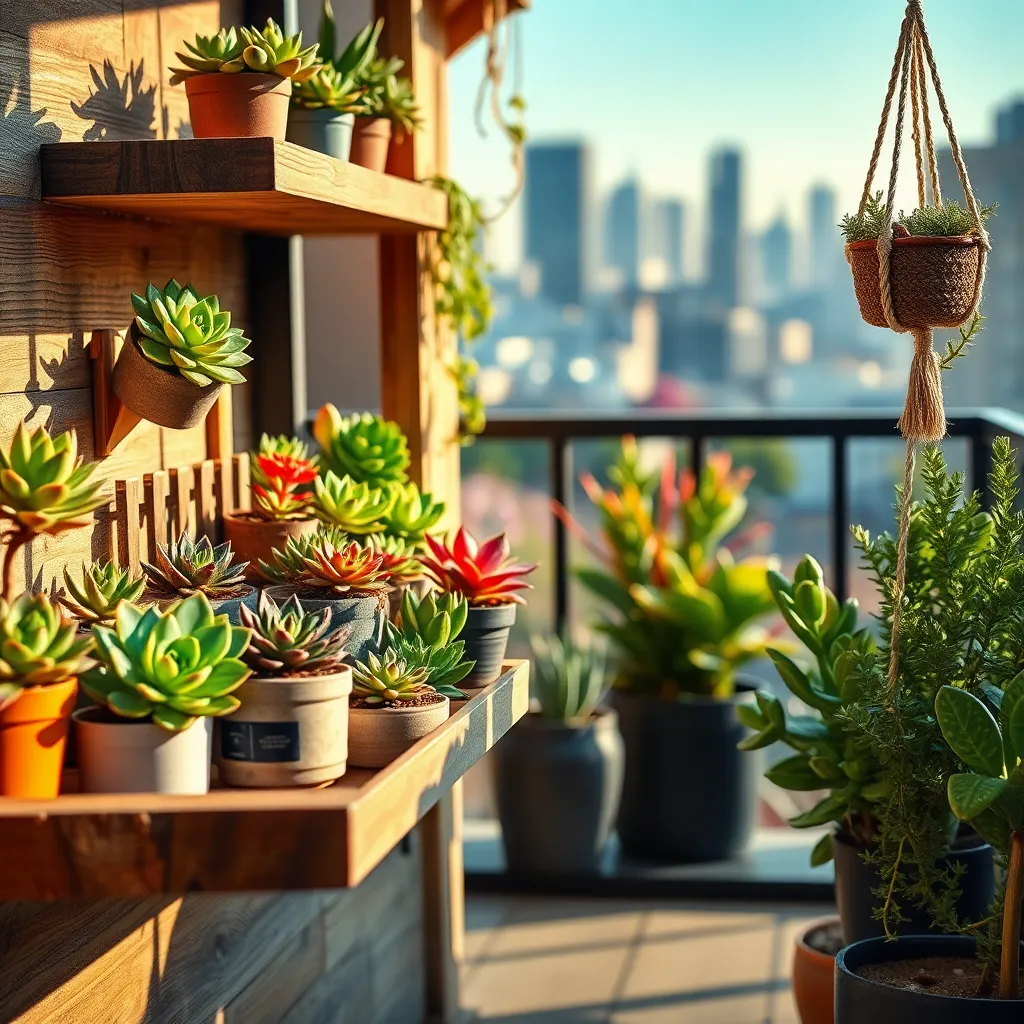
Transforming your apartment into a green haven with succulents can be both fun and rewarding. Start by creating a vertical garden using a wooden pallet or a fabric wall organizer, which can turn an empty wall into a vibrant display of succulents.
Use small pots or planters to add a touch of greenery to your bookshelves or window sills. Choose pots with drainage holes and fill them with a well-draining soil mix, such as a blend of cactus soil and perlite, to ensure optimal conditions for your succulents.
For a unique centerpiece, arrange various succulents in a shallow dish or a glass terrarium. Ensure the container has adequate drainage, and use pebbles or activated charcoal at the bottom to prevent water accumulation.
For those with limited floor space, consider hanging planters or macramé plant hangers. These can be suspended from the ceiling or mounted on the walls, adding dimension and greenery to your living space without taking up valuable space.
Conclusion: Growing Success with These Plants
In exploring ‘Succulent Gardening for Small Apartments,’ we’ve uncovered five key relationship concepts: nurturing growth through patience, fostering communication akin to understanding plant needs, creating space for individuality within limited confines, embracing flexibility in changing environments, and cultivating joy in shared experiences. These insights remind us that even in the tightest spaces, relationships can thrive with attention and care.
As your actionable next step, consider starting a small succulent garden together with your partner. This simple yet meaningful activity will help you practice these concepts, deepen your connection, and bring a touch of nature into your shared living space.
Remember to save or bookmark this article for future reference. Its guidance will serve as a gentle reminder of how to cultivate a thriving relationship, no matter the size of your apartment.
Looking ahead, with commitment and creativity, your relationship can flourish beautifully, just like a well-tended succulent. Embrace the journey of growth, and watch as your partnership becomes an inspiring testament to resilience and love.

